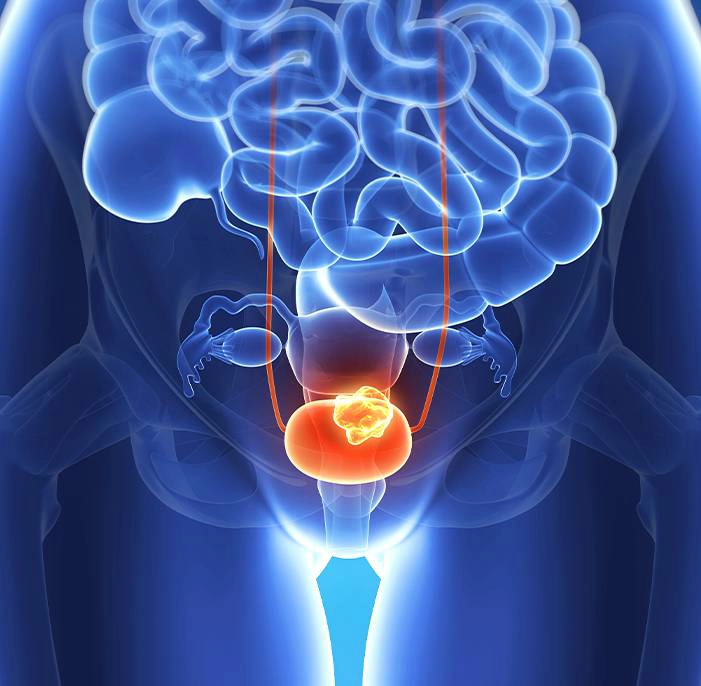Bladder Cancer Symptoms
The most common symptom of bladder cancer is painless haematuria (blood in the urine). Blood in the urine may be visible to the naked eye (gross haematuria) or invisible to the naked eye but detected on a microscopic urine examination (microscopic haematuria), often done during health screenings or checkups for people wit high blood pressure or diabetes.

It is very important to note that haematuria associated with bladder cancer may be intermittent.
That is, days, weeks, or even months may pass after an episode of haematuria during which no blood is seen in the urine. It is therefore very important that any episode of gross haematuria is reported to your doctor even if it occurred days, weeks or even months ago.
Other symptoms sometimes associated with bladder cancer include:
- A change in urination habit (unexplained urinary frequency or urgency)
- A recent history of difficulty passing urine
Bladder cancer rarely causes pain in until it has reached an advanced stage.
Diagnostic Tests for Bladder Cancer
Bladder cancer is diagnosed by looking for abnormalities inside the bladder endoscopic examination of the bladder (Flexible cystoscopy). Flexible cystoscopy can be done in the comfort and convenience of our clinic. If there is a tumour seen in the bladder, endoscopic surgery is required to remove the tumour and check if it is cancerous.
CT Urography (this is a CT scan in which intravenous contrast is injected in order to accurately assess the kidneys, the inner lining of the kidneys, the ureters and the bladder). This will 1) assess the rest of the urinary for causes of haematuria, and 2) in the case of patients found to have a bladder tumour, determine if the bladder cancer has spread to other organs in the body.


Grading and Staging of Bladder Cancer
Grading
During analysis of the tumour specimen under a microscope by the Pathologist, the grade of the cancer is determined. High grade cancers behave more aggressively with higher risk of distant spread and cancer death. Low grade cancers are less likely to grow into the wall of the bladder or to spread beyond the bladder, and have better prognosis compared to high grade disease.
Staging
The stage of the bladder cancer is assessed by the results of the bladder biopsy. The specimen is examined by a Pathologist who is able to accurately determine how deeply the tumour has grown into the wall of the bladder. To determine whether the cancer has spread beyond the bladder, information from the CT urography is used.






